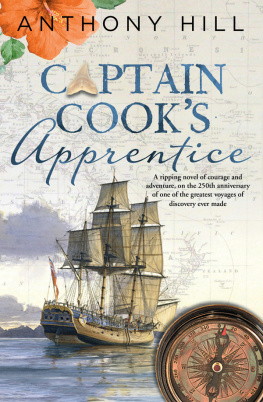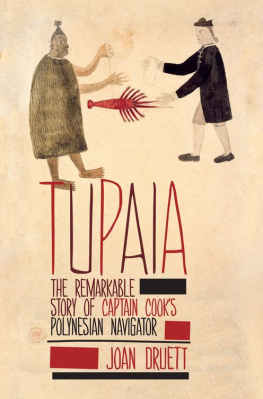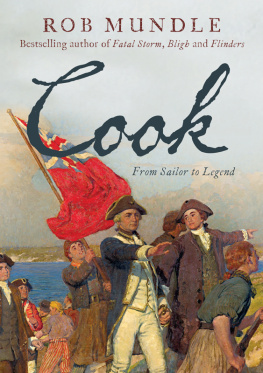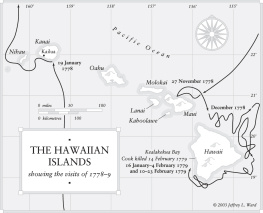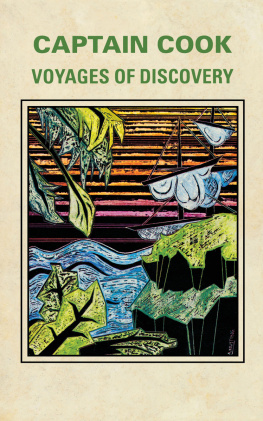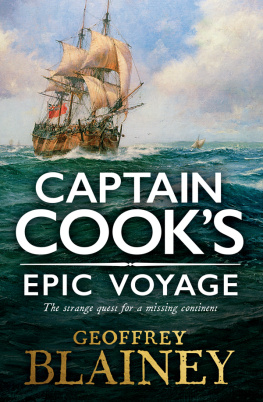Contents

About the Book
When young Isaac Manley sailed on the Endeavour from England in 1768, no one on board knew if a mysterious southern continent existed in the vast Pacific Ocean. It would be a voyage full of uncertainties and terrors.
During the course of the three-year journey, Isaacs eyes are opened to all the brutal realities of life at sea floggings, storms, press-gangs, the deaths of fellow crewmen, and violent clashes on distant shores.
Yet Isaac also experiences the tropical delights of Tahiti, where he becomes enchanted with a beautiful Tahitian girl. He sees the wonders of New Zealand, and he is there when the men of Endeavour first glimpse the east coast of Australia, anchor in Botany Bay, and run aground on the Great Barrier Reef.
Acclaimed and award-winning historical novelist Anthony Hill brings to life this landmark voyage with warmth, insight and vivid detail in this exciting and enlightening tale of adventure and discovery.


For Jane Tanner,
a fellow voyager
I whose ambition leads me not only farther than any other man has been before me, but as far as I think it possible for man to go...
James Cook, 30 January 1774
CONTENTS
THE SHIPS COMPANY
HM Bark Endeavour left Plymouth in August 1768 with ninety-four souls on board. Among them were the following:
Captain Lieutenant James Cook
Lieutenants Zachary Hicks, John Gore
Master Robert Molineux
Masters Mates Richard Pickersgill, Francis Wilkinson, Charles Clerke
Midshipmen John Bootie, Jonathan Monkhouse, Patrick Saunders
Surgeon William Monkhouse
Surgeons Mate William Perry
Captains Clerk Richard Orton
Gunner Stephen Forwood
Boatswain John Gathrey
Boatswains Mates including John Reading, Samuel Evans
Quartermaster Alexander Weir
Carpenter John Satterley
Armourer Robert Taylor
Cook John Thompson
Sailmaker John Ravenhill
Butcher Henry Jeffs
Able Seamen including Isaac Smith (later Midshipman), James Magra (later Midshipman), Forby Sutherland, Peter Flower, Henry Stephens, John Thurman (pressed at Madeira), Archibald Wolf, Francis Haite, Manuel Pereira (from Rio)
Servants, boys including Isaac Manley (later Midshipman), Nick Young, Tom Matthews
Marines Sergeant John Edgcumbe, Corporal John Truslove, eleven Privates including Thomas Dunster, Samuel Gibson, William Greenslade, Thomas Rossiter (drummer), Clement Webb
Supernumeraries Joseph Banks, Charles Green (astronomer), Daniel Solander (naturalist), Herman Spring (assistant), Alexander Buchan, Sydney Parkinson (artists)
Servants including James Roberts, Peter Briscoe, Thomas Richmond, George Dorlton
Tahitians Tupaia, a priest of Oro , Taiata, his attendant

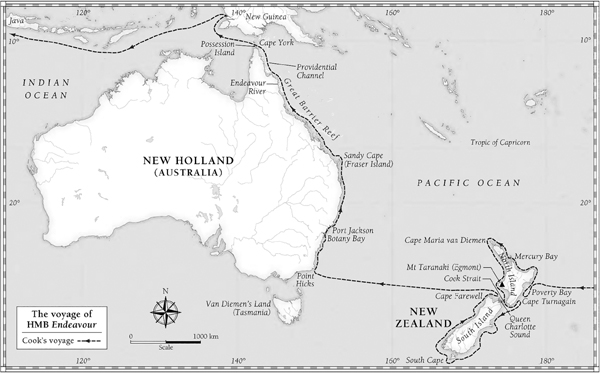
INTRODUCTION
August 2018 marks the 250th anniversary of the departure from Plymouth of His Majestys Bark Endeavour under its captain, Lieutenant James Cook. Its three-year odyssey is among the most significant voyages of European discovery ever made. And that being so, there could be no better time to bring out this new edition of Captain Cooks Apprentice very much a servant boys mess-deck view of the great enterprise, which did so much to expand human knowledge in the arts and sciences, and our understanding of the world we inhabit. And for those of us who live in the new nations of the Pacific that arose in Cooks wake, the Endeavour voyage and all that followed still resonate in our daily lives.
Beyond all the enduring consequences of the Endeavour circumnavigation, however, there remains the sheer adventure of the expedition itself. That intoxicating draught of fear and daring when journeying into the unknown of sailing into a vast, blank space on the map, and not knowing what might happen. Much, in our own day, as we all felt when humanity first flew with a rocket ship into space.
Id long wanted to write the Endeavour story with the immediacy it would have had to somebody on board at the time, but it wasnt until I was reading J C Beagleholes Life of Captain Cook that I found a way into it. There was a single reference to a young fellow, Isaac Manley, only thirteen at the time they left in August 1768, who rose to become an Admiral, lived to be eighty-two and was the last survivor of the Endeavour crew. Here, I thought, was my subject. Isaac had gone on board as servant more akin to an apprentice in our terms to the sailing master, Robert Molineux, to learn his ropes; and he must have done well, for Cook made him a midshipman on the way home. It was his first step up the ladder of promotion... and gave me a chance to tell the tale through fresh, young eyes, in the dawn of life when everything is new.
Very little had been written about Isaac up to that time. When I began the research project I was privileged to be given four hours with Cooks Endeavour journal at the National Library of Australia; he makes no mention of Isaac in it at all, although his name certainly appears in the ships muster book and in Cooks letter to the Admiralty after the voyage, praising him as one whose behaviour merits the best recommendation. Even during two years of research I could find nothing that Isaac wrote about the voyage, despite his long and prospering life.
Yet all the time I was reading Cooks journal I was conscious of the lad living and growing, darting between the lines as, day by day, the Captain wrote his epic words on the page. During my own sail on the Endeavour replica, I made the rounds one night with the watch through the decks of the sleeping ship to ensure that all was well. And I felt very much as Isaac must have done when he did it for the first time after Cook made him a midshipman. The responsibility was palpable and it drew me closer to my theme and to all that happened.
I came closer to Isaac Manley, as well. Later in the research journey I stayed for several days in the lovely Georgian gothick mansion he built for his family in Oxfordshire. You can tell a lot about somebodys personality and motivations when you inhabit for a little while the rooms they made for themselves. And by coincidence, a few years ago, I acquired a map signed by Admiral Manley not long before he died. It shows the coastlines of New Zealand and New South Wales that he was among the first Europeans to see as a boy. I must say it was a constant companion while preparing this new edition of Captain Cooks Apprentice. I was in direct contact with Manley, as I had been with Cook through his journal.
Having said that, its important to add that the novel is essentially a literary re-creation: a mess-deck view, as I said, of the voyage as I imagine Isaac might have experienced it. The girl Heimata and the pearl, Isaacs thoughts, speech, feelings, and the internals of character are wholly fictional. Yet I have sought to remain true to the externals of the Endeavour narrative. The sequence of events as they unfold, and the opinions of Cook, Banks and others, have been based closely on their journals, as documented in the .

